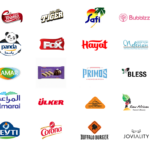Michael Leander, an award-winning speaker and trainer, shares his insider knowledge and guides you to achieving success in email marketing with his latest eBook; Ingredients for successful email marketing.
We are all familiar with receiving mindless emails from companies that end up being skim read and deleted – but what if companies mastered email marketing to engage customers? It might be hard; however, it is usually worth it. The key to achieving great results with email marketing is not always simple, with many things to consider regarding your campaign. The good news is that professionals who have mastered the tactics are kind enough to share their insights – nice of them, right?
Email marketing, if mastered and done correctly, has the potential to outperform all other marketing channels – which is a big statement in today’s world of social media influencers and a millennial generation that prefers reading first-hand reviews rather than falling for clever marketing tricks. According to the Markedu State of European Email Marketing Report, social media reportedly has an ROI of 20:1, whereas email marketing sits at a solid 30:1. Email has held the throne for marketers since 1978 and this doesn’t seem to be changing anytime soon.
Email marketing uses available consumer data to nurture potential customers interests and update them with interesting insights of new services and products, in terms of CRM – email marketing is crucial. We’ve created a short, and precise list of top tips to create a successful email marketing campaign:
- Advertisement -
- Strategic Planning
- The Importance of Tracking and Automation Tools
- Implementing Incentives
- Unsubscribe Funnels
- Interacting with your Customers
- Keeping up with Trends
Strategic Planning
A detailed, strategic plan is key for mastering email marketing campaigns. This includes several areas from setting goals, purposes and objectives to more in-depth aspects such as understanding your audience and their needs. This is where a sales funnel comes into a play. The visual representation depicts the well-known AIDEA (attention, interest, desire, engagement and action) concept, which is crucial when understanding your audience.
A recent Google study found that consumers tend to engage with 11 pieces of content before making a purchase – typically, the tech savvy will research the product, run fact-checks, read reviews and make price comparisons before purchasing. Understanding the sales funnel and each step taken by the consumer allows for strategic planning and nurturing at each stage, thus opening the opportunity to cater around each stage to obtain higher results.
The Importance of Tracking and Automation Tools
A sophisticated tracking tool allows you to monitor your campaigns and change your approach accordingly as to what is and isn’t working.
Bounce rates, open rates, conversion rates, and unsubscribe rates are all factors that should be tracked with an eager eye in order to reach KPIs. This is also where A/B testing comes into play, which is just as important when mastering your email marketing campaign. By conducting A/B testing and using a tracking tool to determine the best approach, you can boost your sales and satisfy customers.
Would you send the same content to new customers as you would to existing customers?
Of course not, you would create a welcome-flow for the newbies with content that is specifically catered to them. Automation tools allow for this to be done automatically, saving you time and providing accuracy whatever the size of your mailing list. Lifecycle campaigns, trigger mails and reminders/nudges can be sent accordingly allowing maximum design flexibility.
Implementing Incentives
Consumers get swamped with offers from brands daily, so in order to stand out, marketers need to be innovative with their incentives.
In terms of email marketing, sending a newsletter advertising a product, and then sending a discount for the product a week later is ideal occasionally but if you are using the same tactics too often it becomes predictive and will end up devaluing your product.
Mixing things up via the uses of promotions in various forms and using incentives that are constantly changing ensures your customers are attentive to upcoming offers. For example, keeping your subscribing customers in the loop for upcoming product launches and giving them the chance to pre-order allows them to get full advantage of your services and makes them feel inclusive of the business’s perks.
Unsubscribe Funnels
Initially, you should be sending all your content to customers. This includes promotions for your own products and services, teasers to your latest blog posts, industry news, incentives and so on. However, providing the customer with the option to unsubscribe is essential in ensuring they do not feel overwhelmed.
When a customer clicks to unsubscribe, it is recommended to give them several options. Would they like to unsubscribe from one section? Would they like to simply mute your emails for a period of 30 days as a break? Giving the customer the power gains more respect.
This is also where tracking comes back into the evaluation, if you can see that more than 80% of your customers have unsubscribed from the same form of content, perhaps it is wise to scrap this section altogether.
Interacting with your Customers
Email marketing doesn’t just stop at sending out email campaigns. In 2019, interaction with customers is highly valued. The use of social buttons in your emails goes a long way and paves the way for improved user engagement.
Updating your social media platforms with fresh content keeps existing customers engaged and encourages new customers to sign up to your emails. Blog posts and upcoming projects are good examples of what can be posted on your social media channels.
Keeping up with Trends
In the digital world, things are always progressing meaning there are new trends and competitors to keep up with. The use of AI (Artificial Intelligence) will continue to grow and thus help make your job much easier, or perhaps harder if you are reluctant to progressing alongside technology.
For example, AI allows emails to be sent at optimal times. If a customer often checks their emails at 8 am on their way to work the system will automatically deliver the email at this time as opposed to another customer who checks their email in the evening.
Staying up to date ensures you are not left behind in the competitive and ever evolving marketing world.
Summary
A successful email campaign calls for creativity and analytical thinking. Understanding your audience and aligning their needs with your content concept is just the tip of the iceberg. A/B testing is required to ensure you are engaging with your customers and keeping up with future trends is necessary to staying in the game.
Tactical elements include customer interaction and personalization, offering incentives and ultimately giving your customer choices in how they wish to be contacted.








